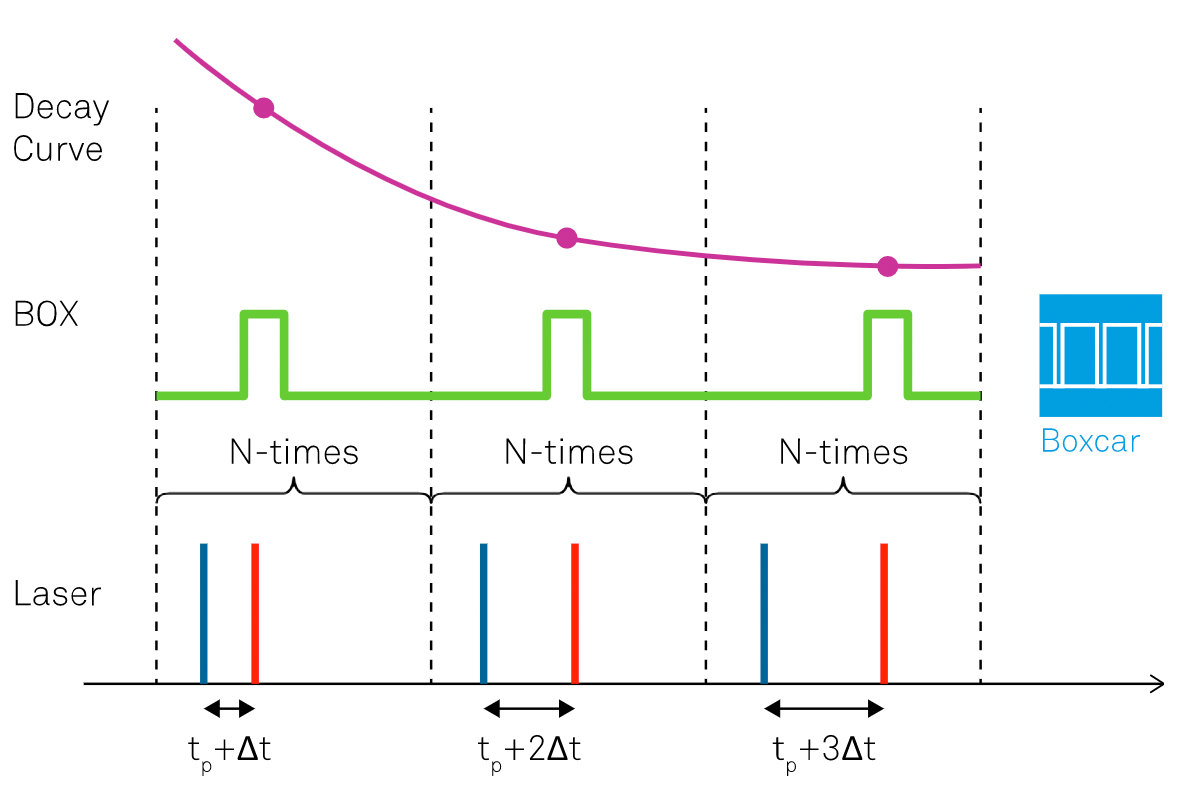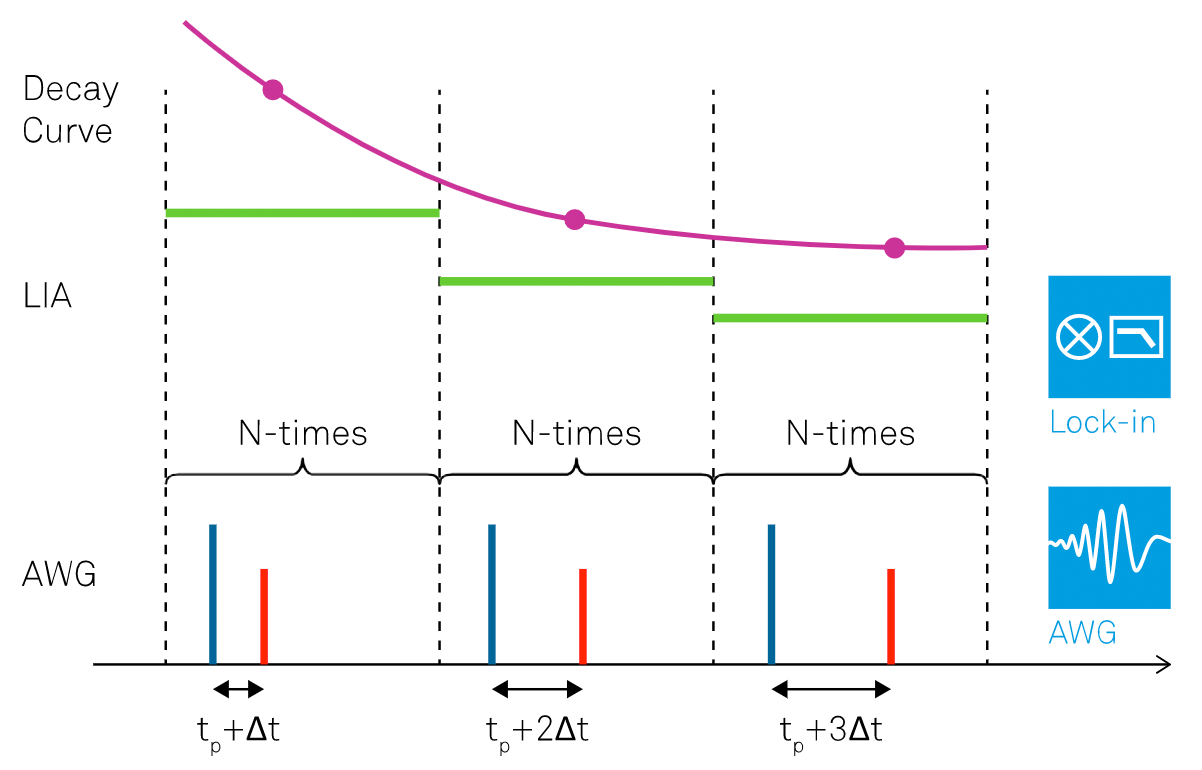Time & frequency are the physical observable that can be measured with the highest accuracy. With lasers reaching the attosecond resolution, many ultra-fast phenomena can now be probed with exquisite precision, expanding to other electrically probing methods as well. This gave rise to a wealth of different type of time-resolved experiments that rely on the same pump & probe principle. The precise control of delays, minimizing jitter and latency, is therefore key for best results in this field.
Applications
- decay time measurements
- pump-probe experiments
- control of delay lines
- time-domain analysis.
Objectives
Control the time lapse between an exited and relaxed state, measure the integrated output over a precise time-window (boxcar) or capture the averaged (lock-in) or instantaneous (digitizers) response.
Benefits
- All integrated solution for generation/triggering, delay and sweeping of delay
- Simple add-on to existing set-up
- Pulse shaping for electrically driven excitation (iFFT of the transfer function response)
Methods

Laser pump-probe using Boxcar Averager for detection, synchronized with the repetition rate of the laser

Electrical pump-probe with AWG excitation using lock-in amplifier detection. Only the averaged value for a certain delay is probed.
Time-resolved experiments can be broadly split into 2 main categories where the excitation source is either optically or electrically driven. While optical method provides the best time resolution with femtosecond lasers, electrical methods allow for easier and cost-effective implementation with fast Arbitrary Pulse or Waveform Generators (AWG). The choice depends essentially on the time scale of the physical observation. Detection can be synchronized with the repetition rate of a laser or locked to the resonance frequency of a mechanical resonator in the case of AFM or SNOM. The higher the repetition rate the faster the measurements can be averaged as the SNR depends on √N, where N is the number of samples at a given delay time. With the Zurich Instruments UHFLI, a 600 MHz lock-in amplifier, the following three detection methods can be implemented:
- UHF-BOX Boxcar Averager, where only the response from the probe is captured within a user-defined time-window and averaged over the number of samples
- UHFLI Lock-in Amplifier, which provides the average amplitude output from an incident modulated beam or oscillating cantilever
- UHF-DIG Digitizer which captures the dynamical response upon any trigger conditions, with precise control of delay with respect to the excitation
Let's consider two specific examples with different excitation and probing scheme in more detail below.
